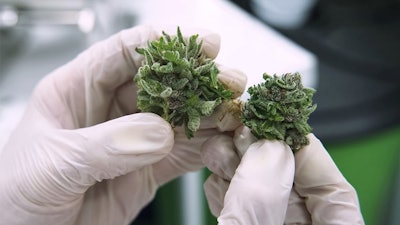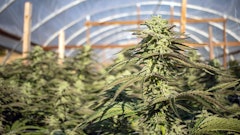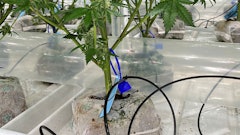
Editor's note: 9:37 p.m. ET, Aug. 4: This article was updated to include the following statement provided to Cannabis Business Times by Nicole Elliott, California Department of Cannabis Control director:
"This practice of purposely altering lab results is the result of unscrupulous labs that are intentionally undermining the regulatory space, scamming consumers and threatening public health. There is no reasonable excuse for this type of behavior, for seeking to justify it or for financially supporting it in California’s legal market.
"The DCC has moved quickly in its first year of existence to undertake enormous regulatory responsibilities previously housed across three distinct state departments. We are proud of the strides we have made to help support the cannabis industry and continue to work on the many unique and complex issues within our control. One thing we know - significant changes can take time and require collaboration. We work in earnest every day to make progress towards these changes and improvements that will better support our legal market and drive accountability amongst our licenses.
"One example of this work is reflected in the Department’s proposed SB 544 regulations. The intent of SB 544 is to tackle the issue of potency inflation and inaccurate testing of contaminants by establish testing standards where none existed. The proposed standardized cannabinoid – potency - test method creates a standard for laboratories to follow that will reduce variation of results from laboratories using alternate methods.
"This is one example, and there will be more we will share, as there is work underway to build on these efforts. In the meantime, we encourage stakeholders to focus their energy on productive collaboration as we continue our work to expand compliance with our overall regulatory framework."
Original article:
California’s Department of Cannabis Control (DCC) closed public comment Aug. 2 on a regulatory package aimed at resolving the issue of inaccurate cannabis lab test results.
But there’s a problem with the DCC’s approach, say California cannabis lab managers.
At least six commenters in an Aug. 1 public hearing on the package stated that the issues with fraudulent lab tests will not be addressed by the proposed regulations. Some said the regulations will hurt the industry and consumers if labs are required to spend time and money to comply with new regulations while potency inflation continues.
The DCC issued the proposed regulations following the passage of California Senate Bill 544, which requires the agency “on or before January 1, 2023, to establish one or more standardized cannabinoids test methods to be used by all testing laboratories.” The proposed regulations outline that cannabis testing labs must use high-performance liquid chromatography (HPLC) systems and test for nine cannabinoids, among other methods.
Evelyn Alvarez, director of quality assurance at Encore Labs in Pasadena, said the issue of potency inflation is occurring because the labs that inflate numbers are “not being held accountable. They’re not being investigated. They’re not in fear of losing their license.” (A DCC spokesperson recently told CBT that the department has been taking action on potency inflation.)
“What’s being seen is that total THC numbers, in particular, are being inflated in order for labs to gain clientele,” Alvarez said. “These increased numbers are not because of method variability. They are intentional efforts on behalf of dishonest, fraudulent labs.”
RELATED: California’s Cannabis Market at a Crossroads
Scott Willard, CEO of Coverton Labs in Monterey, was among the commenters who said potency inflation will continue unabated under the proposed regulations.
“We believe at Coverton Labs that standardizing the method for potency will do absolutely nothing to curb the fraud that’s been happening in the industry,” Willard said. “Most of the fraudulently reported numbers are happening outside of the method. There are so many ways that this can occur.”
Willard said labs that create fraudulent test results use various methods.
“The homogenization of the sample to represent a standard or a representation of the sample as a whole, is not being done properly,” Willard said. “They can simply use the kief from the bottom of the bag or trim off areas that have low quantities of THC, such as the stems. The scales, potentially, are not being calibrated using the proper weights. They can modify weights. They can use improper weights."
“Points on the calibration curve are being modified,” he adds. “The incorrect numbers are purposefully being written down on the bench notes so that the DCC wouldn’t know any the wiser. False sample is being used, potentially, not the actual sample.”
The best way to address fraudulent lab results would be for DCC to spot-check cannabis at dispensaries, Willard said.
Travis Ruthenburg is senior vice president of research and development at SC Labs, which has its California operation in Santa Cruz. Ruthenburg also suggested spot-checking as a solution to fraudulent test results.
“Additionally, the department can analyze aggregate historical data to look at laboratories who are deviating from the mean in testing, which might be an indication that those laboratories are reporting incorrect results, whether intentional or not,” Ruthenburg said.
Some commenters said the proposed regulations would have a negative environmental impact if enacted in their current form.
Ruthenburg stated that SC Labs is working to decrease its solvent use but that the proposed regulations require 40 milliliters of extraction solvent. “We believe that this requirement to use 40 milliliters of extraction solvent is probably a larger volume than is necessary for efficient, proper extraction, and will contribute to the generation of hazards, which will have to be disposed of and can impact the environment and certainly impact costs,” Ruthenburg said.
On that topic, Willard said, “With the additional amount of waste, it would be about 254.8 liters of extra solvent per year if 100 samples per day are being run. And this is not a very good, environmentally friendly standpoint, which is something that we’re very concerned about in the lab industry at all times.”
Several commenters also said the proposed standardization would require labs that already use science-based analytical methods to pivot to new methods.
Autumn Anderson, quality manager at Landau Labs in Cathedral City, said coming into compliance with the proposed regulations would create added costs and operational hurdles with meeting client expectations.
“One of the issues we did want to bring up and highlight is the throughput of samples with this method would be definitely impacted. For smaller labs, providing the testing turnaround in a reasonable time is very important to maintain clients,” Anderson said. “And increasing the number of equipment in the space that many labs have, and just the cost of that would be extremely difficult to maintain, to keep up the level of samples that need to be tested to maintain a viable business.”
Josh Swider, CEO of Infinite Chemical Analysis Labs (InfiniteCAL) in San Diego, said InfiniteCAL is using a potency testing method that has already been validated by the DCC.
“This is something that we went back and forth with and did things that we did not see scientifically relevant, but the DCC did,” Swider said. “And we spent a lot of money and a lot of time on that.”
Addressing the nine cannabinoids that the proposed regulations outline, Swider said he has already spent the time and money to achieve ISO certification for a method that InfiniteCAL uses to test for 19 cannabinoids.
Swider was one of several commenters who said they would like to see alternative testing methods that can remain in compliance with DCC other than the specific approaches proposed in the rulemaking.
“There is rhyme and reason of what we do—we don’t just do things to waste money and to develop more methods,” Swider said. “We do it to fix the problems that we are seeing in the industry or in our analytical approach."

























